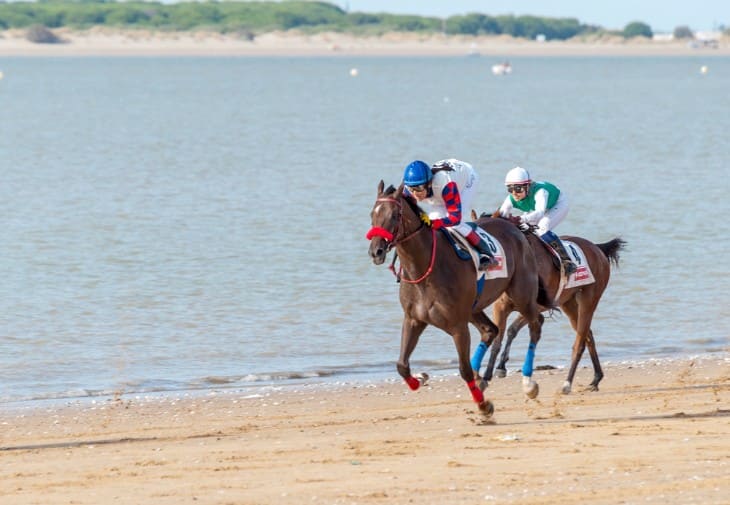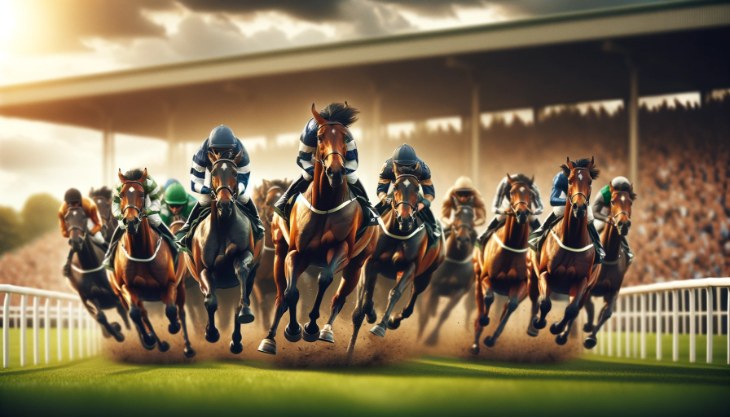- Intoduction
- Historical Significance of Mares in Racing
- Evolving Role of Mares in Modern Horse Racing
- Breeding Strategies for Producing Successful Racing Mares
- Performance Analysis: Mares vs. Stallions and Geldings
- Notable Achievements of Iconic Racing Mares
- Challenges Faced by Mares in the Racing Industry
- Training and Conditioning of Racing Mares
- Jockey Perspectives: Riding and Bonding with Mares
- The Influence of Mares on Bloodlines and Stud Books
- Conclusion
Intoduction
Horse racing has long been a cherished tradition in the United Kingdom, captivating enthusiasts with its blend of speed, strategy, and sheer athleticism. Among the equine athletes that grace the tracks, mares – female horses – have played a significant but often understated role. In this exploration, we'll delve into the world of mares in UK horse racing, uncovering their historical significance, evolving roles, and the intricacies that make them a fascinating part of this age-old sport.
As the thundering hooves of racehorses echo through the annals of time, mares have been quietly galloping alongside their male counterparts, contributing to the tapestry of racing history. While the spotlight has often been on the stallions and geldings, mares have consistently left their mark, even if not always in the headlines. Their journey through the evolution of the sport provides us with valuable insights into the changing dynamics of horse racing and the essential roles they've played throughout.
Historical Significance of Mares in Racing
Rewinding the clock, we find mares intricately woven into the fabric of horse racing's history. From the earliest days of turf, they were venerated for their speed, stamina, and ability to compete alongside their male counterparts. The tales of legendary mares like Pocahontas and La Fleche serve as a testament to their prowess on the tracks and their contribution to the development of the sport.
In a bygone era, when horse racing was often a test of endurance, mares proved their mettle time and again. Their involvement was not only a reflection of their own capabilities but also a nod to the indispensable role they played in sustaining the equine population through breeding.
Mares held their ground in classic races, showcasing their tenacity and determination. While some sceptics questioned their participation, these mares defied expectations and established a legacy that continues to influence the sport to this day.
The historical significance of mares extends beyond the racetrack. Their contribution to bloodlines, stud books, and the enhancement of equine genetics has left an indelible mark on the very foundations of horse breeding. Their lineage has seeped into the pages of history, creating a lineage that is nothing short of remarkable.
Evolving Role of Mares in Modern Horse Racing
As horse racing transitioned from dusty tracks to state-of-the-art facilities, the role of mares underwent a transformation. The modern racing landscape has seen mares not only competing fiercely against their male counterparts but also achieving remarkable success in prestigious events. This evolution is a testament to the changing attitudes towards gender equality in the sport.
In recent years, mares have proven themselves as contenders for some of the most coveted titles in UK horse racing. Their presence in events like the Cheltenham Gold Cup and the Epsom Derby has challenged conventional norms and given rise to discussions about the physical attributes and racing prowess that mares bring to the track. No longer confined to gender-specific races, they've demonstrated their versatility and ability to shine in various racing categories.
Breeding Strategies for Producing Successful Racing Mares
The art of breeding champion racehorses is a meticulous process, and when it comes to producing exceptional racing mares, a blend of science, experience, and intuition comes into play. Breeders and stud owners meticulously select the best stallions to complement the strengths of mares, aiming to create offspring that embody the ideal balance of speed, stamina, and temperament.
Breeding racing mares is a delicate balancing act. Traits that enhance speed might come at the expense of endurance, and vice versa. Thus, breeders must weigh their choices carefully to create a mare that can excel over varying distances and racing conditions. The goal is to create a well-rounded athlete capable of holding her own against the fiercest competition.
Moreover, the influence of successful racing mares on breeding decisions can't be overstated. The bloodlines established by these mares become sought after in the breeding world, with the potential to shape generations of racehorses to come. Breeders look to emulate the traits that made these mares successful while introducing new elements to continually enhance the gene pool.
For more information: The Science of Breeding a Winning Racehorse.

Performance Analysis: Mares vs. Stallions and Geldings
The comparison between mares, stallions, and geldings on the racing field has long sparked debates and discussions among racing aficionados. While the physical differences between the sexes are apparent, it's the performance statistics that provide insight into their respective capabilities on the track.
Historically, mares were perceived as less competitive than their male counterparts, but the tides have shifted. Data analysis reveals that mares are not only holding their own but also excelling in certain areas. In some cases, they've displayed a level of consistency that can rival even the most accomplished stallions.
Researchers attribute this shift to a combination of factors, including advancements in training methods, veterinary care, and a better understanding of equine physiology. Modern training techniques have allowed mares to reach their peak potential, and their performance records reflect this improvement.
Notable Achievements of Iconic Racing Mares
As the pages of horse racing history unfold, we encounter a roster of iconic mares who have left an indelible mark on the sport. These mares defied expectations and shattered records, showcasing their strength, speed, and unyielding determination.
From the unforgettable Arkle-winning mare Dawn Run, who secured her place in history by clinching the Gold Cup and Champion Hurdle, to the phenomenal Enable, whose dominance in the racing world knew no bounds, these mares have captured the hearts of fans and solidified their legacies as true legends.
Their stories resonate beyond the races they conquered. They've become symbols of inspiration, proving that gender holds no sway over the pursuit of greatness. These remarkable mares stand as testament to the potential locked within every equine athlete, and their achievements continue to inspire a new generation of racing enthusiasts, trainers, and breeders alike.
Challenges Faced by Mares in the Racing Industry
While mares have made significant strides in UK horse racing, they haven't been immune to the challenges that come with competing in a traditionally male-dominated sport. One of the notable hurdles they've faced is skepticism about their ability to perform at the same level as stallions and geldings. This bias has often led to mares being underestimated and overlooked when it comes to major racing events.
Additionally, the breeding and training landscape has historically favoured stallions, with resources and investments often directed towards them. This disparity can lead to mares not receiving the same level of attention, hindering their development and performance. Despite these challenges, mares and their supporters have tirelessly worked to shift perceptions and showcase their capabilities, making strides towards gender equality in the racing world.
Training and Conditioning of Racing Mares
The journey from the breeding barn to the starting gate involves meticulous training and conditioning that shapes a mare into a competitive athlete. Training programmes are tailored to the individual needs of each mare, considering factors such as physical strengths, weaknesses, and racing preferences.
Mares undergo rigorous fitness routines that encompass cardiovascular workouts, strength training, and interval exercises. These regimens not only build their physical prowess but also enhance their mental acuity, preparing them for the intensity of the racetrack. Specialised trainers work hand in hand with veterinarians to ensure the mares are in optimal health, enabling them to perform at their peak on race day.
Mares also benefit from the nurturing relationships they form with their jockeys and grooms. These bonds are crucial in cultivating trust, helping the mares maintain a calm and focused demeanor amidst the excitement and pressure of race environments.
Jockey Perspectives: Riding and Bonding with Mares
Jockeys are the unsung heroes of the racing world, guiding these majestic creatures to victory with skill, precision, and a deep understanding of their equine partners. When it comes to mares, the bond between jockey and horse is a fascinating dynamic that adds another layer to their performance on the track.
Riding a mare demands a unique blend of sensitivity and strength. Mares often possess distinctive personalities, requiring jockeys to adapt their approach to match each individual's temperament. The process of forming a connection with a mare involves spending time together off the track, understanding her cues, and building trust through patient interactions.
Jockeys who have established such connections with mares often speak of the rewarding experience it brings. The partnership formed between a jockey and a mare is built on mutual respect, a shared goal of victory, and the intricate dance of communication that takes place during a race. These partnerships have yielded some of the most exhilarating and heartwarming moments in racing history.
For more information: The Role of Jockeys in Horse Racing.

The Influence of Mares on Bloodlines and Stud Books
Beyond their performances on the racetrack, mares exert a profound influence on the world of breeding and genetics. Successful racing mares become highly sought-after in breeding programs, as their genetic legacy holds the promise of producing future champions. Their performance records, lineage, and physical attributes are carefully studied by breeders aiming to perpetuate their winning traits.
Mares serve as invaluable contributors to the expansion and enhancement of bloodlines, playing a vital role in maintaining the diversity and strength of the equine gene pool. Their offspring carry forward the legacy of their achievements, creating a lineage that traces back to the determination and skill of their mothers.
Through careful selection of mates and the cultivation of desirable traits, breeders are able to influence the future of horse racing by producing generations of talented racehorses. Thus, the impact of a single exceptional mare can ripple through time, shaping the course of the sport for years to come.
Conclusion
In the captivating world of UK horse racing, mares have emerged as a force to be reckoned with, defying stereotypes and leaving an indelible mark on the sport. Our journey through the chapters of this analysis has illuminated the diverse roles mares have played, from their historical significance as trailblazers to their modern-day achievements that continue to rewrite racing history.
These remarkable equine athletes have shattered barriers, transcending gender norms and proving that determination knows no boundaries. They've captured the hearts of racing enthusiasts worldwide, showcasing the power of perseverance and the beauty of the partnership between horse and rider.
From the breeding strategies that shape their genetic legacy to the challenges they've faced and overcome, mares have exhibited a resilience that mirrors the very essence of the sport they participate in. Their contributions extend far beyond the racetrack, influencing bloodlines, shaping stud books, and enriching the tapestry of horse racing heritage.








